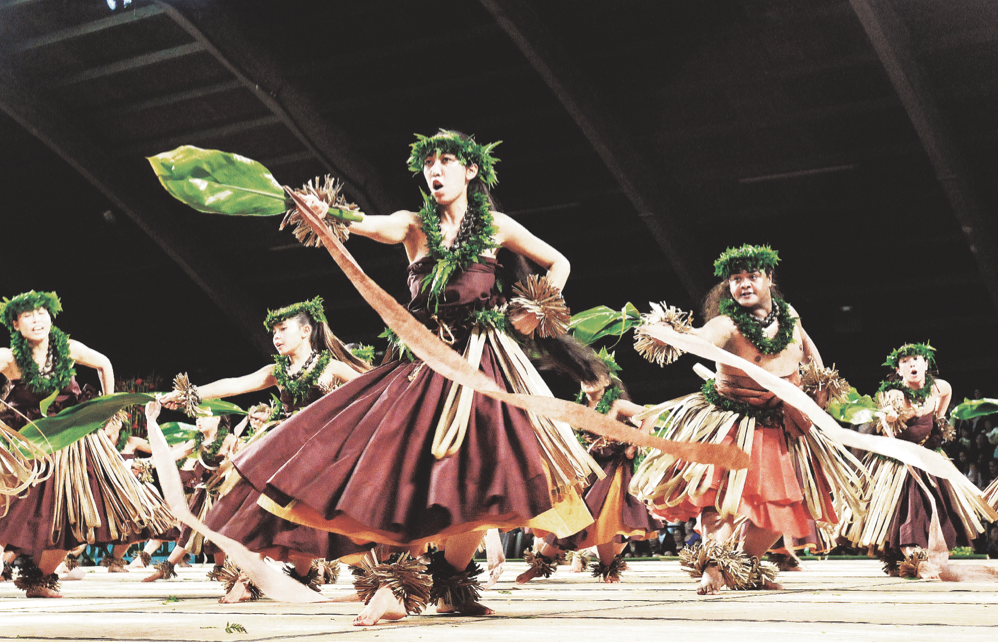As victories continue to mount around the world for LGBTQ communities, in Hawai‘i, a future of gender and sexual equality is being envisioned by looking to the meaning of mahu.
The transcendence of Hawaiian language is famous. Beginning hula students are often surprised at the gorgeous nuances of sung Hawaiian: how a playful lyric of the sea has levels of meaning, how the choreography of a liquid rush can mean something else entirely in regard to human behavior.
There are few simple definitions; the vagaries of the language continue to be interpreted and debated. For individuals who identify beyond western conceptions of heterosexual identity, there is some solace in the fact that same-sex cohabitation and individual identity have historical context.
In the present Hawaiian dictionary, ‘aikane can be defined as an intimate friend of the same sex; a friend or companion of the same sex; or those who mutually give and receive presents of the same sex.
Meaning of Mahu
Mahu is defined as homosexual, of either sex; hermaphrodite.
These translated definitions, however, are useful only as a starting point, the lyrics of a mele (song) with deeper meaning. In pre-contact Hawai‘i, sex and gender were integral in the dynamics of power as a component of a complex socio-political system, in ways thoroughly different from modern western conceptions.
Ali‘i, the highest of the ruling class, fiercely protected their bloodlines by taking ‘aikane lovers as a way to practice safe sex without the possibility of procreation. For maka‘ainana (the commoners) too, sex—including sex with same-sex partners—was also free from modern conceptions of monogamy. It was considered a part of a relationship but certainly not its defining characteristic. Mahu was accepted in Hawai‘i as it was throughout Polynesia, defined in part by what it was not: a demographic, a race, an excluded minority.
Mahu is defined as homosexual, of either sex; hermaphrodite.

These relationships were commonly honored in Hawaiian arts of song, dance, and chants, open to interpretation as songs of affection for either gender.
What may be the most-often performed modern Hawaiian love song, Keali‘i Reichel’s Kawaipunahele, was a veiled dedication to his lover he called Puna, from whom he was separated: Nou e Kawaipunahele (For you Kawaipunahele) Ku‘u lei aloha mae ‘ole (My never-fading lei) Pili hemo‘ole, (Never separated,) Pili pa‘a pono (Firmly united.) E huli ho‘i kaua (Come, let’s go back.) E Kawaipunahele (O Kawaipunahele.) Ku ‘oe me ke ki‘eki‘e (You stand majestically) I ka nani a‘o Wailuku (In the splendor of Wailuku.) Ku‘u ipo henoheno, )My cherished sweetheart,) Ku‘u wehi o ka po (My adornment of the night) E huli ho‘i kaua (Come, let’s go back.) E Kawaipunhele O Kawaipunahele

Vocabulary of Shame
The missionaries who showed up in 1820 were not keen to the mele. Christian conceptions of heteronormative relationships are nothing new to those who grew up in the cultural spheres of America.
Boston’s best Bible-thumpers quickly got to dispelling all notions of ‘aikane, all shameless mahu, and a campaign to save souls throughout the archipelago was waged.
Though the missionary zeal created the most literate populace on the planet at the time, it also introduced an imposed vocabulary of shame.
Fast-forward to the last several decades of LGBT visibility and activism in Hawai‘i, in which sex and gender equality advocates continue to contend with these competing histories of inequality. Numerous Polynesian communities have since become devout Christian practitioners.
Same Sex Marriage
In 1993, the Hawai‘i Supreme Court decided for the first time in America that the prohibition of same-sex marriage was in violation of a state constitution. That decision was later compromised by the federal Defense of Marriage Act, which allowed states to refuse to recognize same-sex marriage licenses.
Twenty years later, in 2013, the issues returned to Hawai‘i with Senate Bill 1, drafted to give full equitable rights to same-sex couples in marriage.
When more than 4,000 individuals testified at the state legislature in October 2013, a firestorm of indigenous and introduced conceptions of romantic love ensued—a hot mess in Honolulu’s cool season.
The bill passed and Hawai‘i joined 14 other states that recognize same-sex marriage. The battle over marriage equality played out both on the steps of the capital and in the newspapers.
Hinaleimoana Wong-Kalu, a cultural practitioner, hula instructor, and advocate for sexual equality, was one of several kumu (teachers) who came out in support of the measure.
“Kanaka Maoli have been conditioned for so long to think and act like foreigners that we have allowed the meaning and intent of our words, traditions, and philosophies to be replaced by neo-Christian beliefs and used to further a Western political agenda on our islands,” she wrote in a letter to the Honolulu Star Advertiser.
She further examines these ideas in Kumu Hina, a film that documents her journey as a transgender educator and cultural advocate. Hina, along with her colleagues in the arts and academic cultural advocates, continue to unpack the evolving definitions of ‘aikane and mahu.
Using mele of love from both indigenous conceptions of fluidity and introduced conceptions of advocacy, they navigate multiple meanings in an uncharted sea, creating new identities in the process.
You May Also Like: Why It’s Time to Pay More Attention to the LGBTQ Traveler



